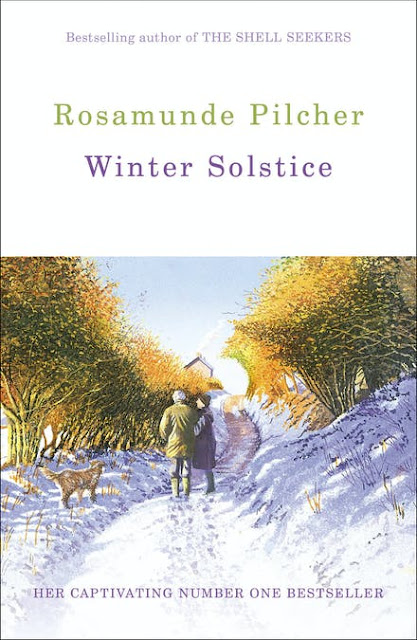The Nature of Cities
The UK has been in lockdown, and many people have sought solace in the countryside. I myself am in rural Aberdeenshire, and very happy I am too.
I've been thinking, however, about cities. People don't just stay in them because they work there; cities are places of energy and buzz, places where many generations and many nationalities often live alongside one another, gaining greatly from the interchange of cultures, ideas and cooking. And cities are as much about nature as small villages and tiny hamlets - you simply need to look a bit harder. Some authors have done just that.
Esther Woolfson lives in the west end of Aberdeen, just a few streets from the house in which I spent ten years of my life - but unlike me at that time, Woolfson is acutely aware of the natural world all around her, and her book Field Notes from a Hidden City, opened my eyes to so much that I had been missing. She investigates and enjoys everything from spiders' webs to birds, bats, foxes and even slugs. She walks along the beach, she protests against Donald Trump's plans to dig up an area of huge scientific interest and great beauty to build a golf resort. Most of all she watches, and she sees, the wildlife that has adapted to the built structures of the city. Her writing is outstanding, and I can't recommend this beautifully produced book highly enough.
In late 2019, John D Burns decided to spend a winter investigating the wildlife of the hills he had walked and climbed for decades. Till then, the animals and birds of Scotland's mountain ranges and rural estates had been somewhat incidental to the expeditions, the story of which Burns tells in the excellent The Last Hillwalker and Bothy Tales. What he didn't know, however, was that just a few short months after he started this new project, a tiny virus would send the world into chaos and the country into lockdown.
Burns lives in a flat in the centre of Inverness, and there he was stuck. The bucket list of things he'd planned to see - rutting deer, basking seals, otters, pine martens, mountain hares, sea eagles, maybe a whale or two - was, he thought, done for. But after understandably feeling fed up for a while, he started to take walks around the city - and found that remote highland hills are not the only places to see wildlife. Birds visited his seed feeders, he watched ducks on the river; he even saw an animal who had steadfastly eluded him on a deserted Sutherland beach; an otter, who turned up, swimming along the Ness as it flowed through the city. Sometimes we have to be made to stand and stare.
Wild Winter, the story of a winter like no other, may focus mainly on the journeys Burns was able to make into the wilds, but his writing about those locked down months in Inverness is equally absorbing. (My full review is here.)
When Bob Gilbert's wife became an Anglican priest, he imagined himself in some rural vicarage, trudging across snowy fields to Christmas services, wandering along summery country lanes. Instead the family found itself in Poplar, in the East End of London. Their vicarage still had a garden, one in which Gilbert kept chickens and tilled the unyielding soil - but he soon found a wider mission; he would trace the first poplar tree in the area, and along the way investigate the natural and social history of his small part of a huge city.
The result, Ghost Trees, is a fascinating and extremely readable account of the origins of the London we know today. The author looks at the legacies of the various immigrants who have made their homes in the East End - Huguenots, Bangladeshis, Chinese, Irish and Scots - and at the plants and foods they brought with them. He studies the lie of the land, and traces the course of rivers long sent underground. He unearths stories about local industries, from Bryant and May matches to cordite for the First World War He questions why a particular plant is growing on a particular, unremarkable, wall, he asks why some silkworm schemes worked and some didn't (and unearths some remarkable similarities with modern politics.) He even tries water-divining. Gilbert has the perfect magpie mind for this kind of thing; he clearly loves uncovering stories, and he is in turn an excellent storyteller. Instead of feeling stuck in the city, read this book and see how much there is right under your nose, just waiting for you to find it. Nature is endlessly adaptable; we can be too.
If you live in a city, or even if you don't, these authors may inspire you to look again at the small, hidden corners, and the wildlife that survives and flourishes in the most unexpected of places.
My full review of Ghost Trees is here.
If you've read a good book about urban nature, I'd love to hear about it.
Field Notes from a Hidden City by Esther Woolfson is published by Granta.
Wild Winter, The Last Hillwalker, and Bothy Tales, all by John D Burns, are published by Vertebrate Publishing.
Ghost Trees by Bob Gilbert is published by Saraband





I have Wild Winter TBR as I couldn't resist it, but both of the others look excellent, too!
ReplyDeleteThank you for reading - Wild Winter is excellent (maybe even more so if you have already read The Last Hillwalker, as some of the people crop up again - but it’s certainly not essential.) I found Ghost Trees so absorbing - both for the nature and for the social history which Gilbert clearly enjoys digging up as much as I enjoy reading it. And Field Notes is beautifully written and very interesting too; I also have Esther Woolfson’s Corvus on my TBR, which friends tell me is even better.
ReplyDelete